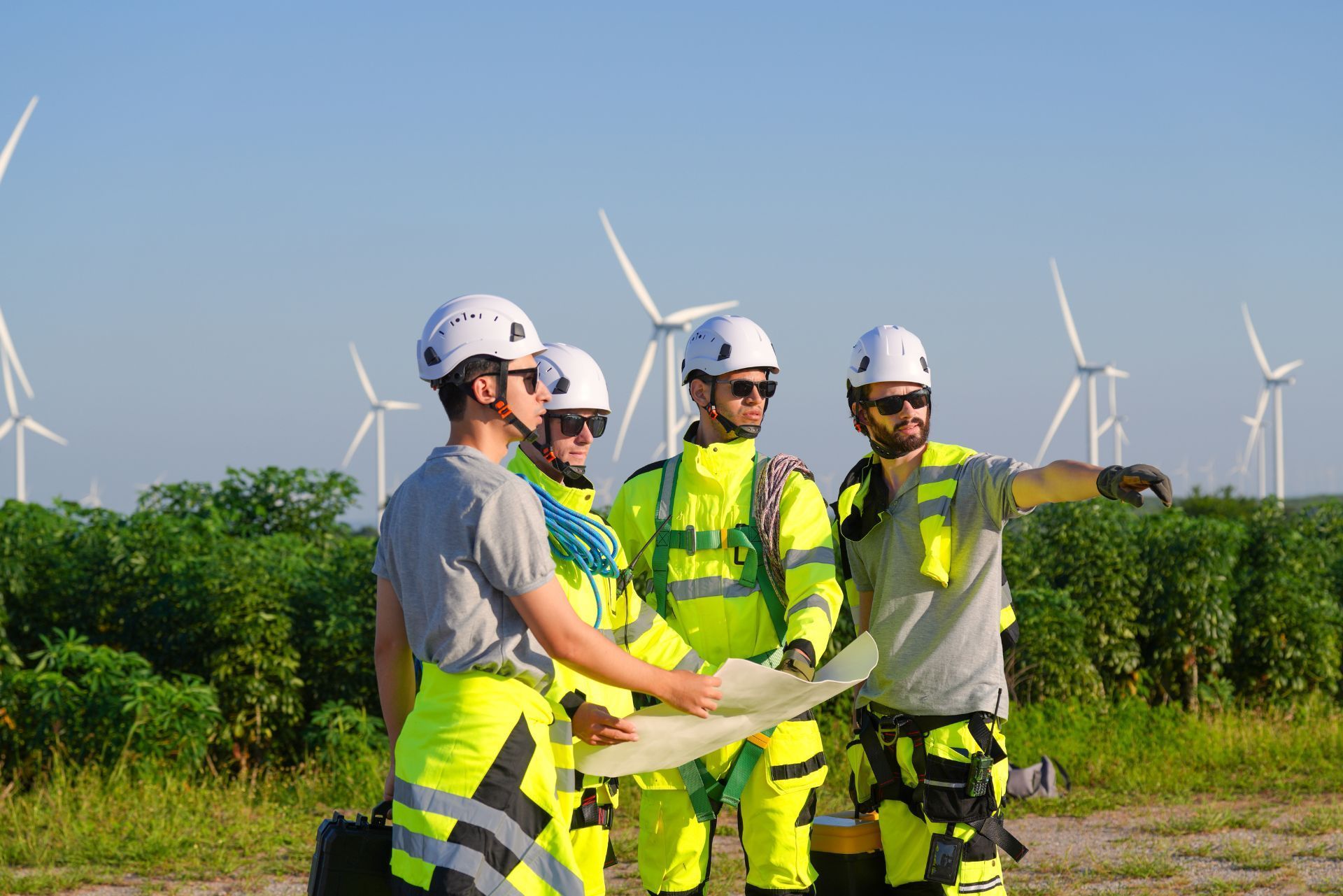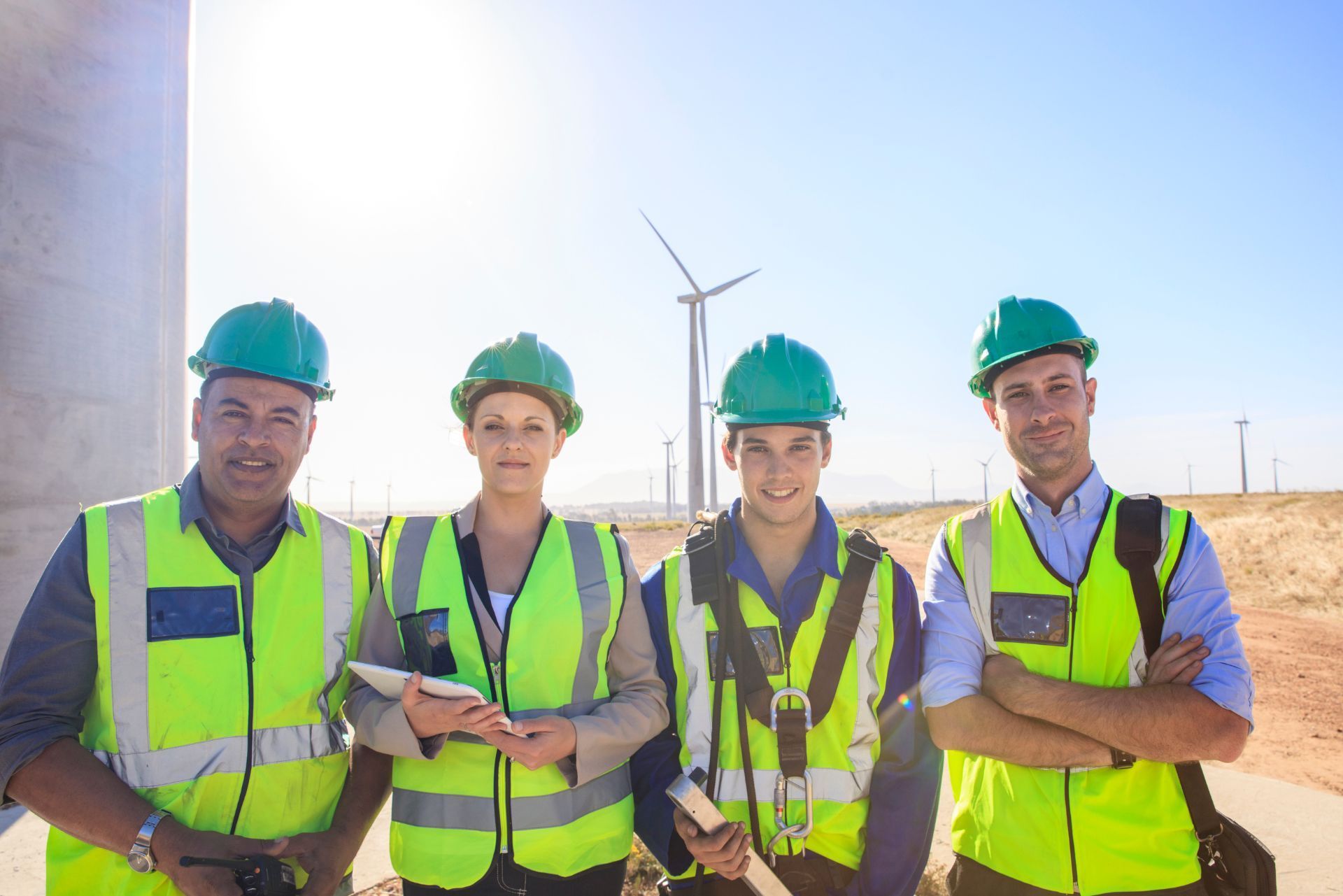Top 3 Recommended Policies

The rapid expansion of onshore wind farms is a cornerstone of the global transition to renewable energy. With increasing investments and ambitious climate targets, the wind energy sector is booming, but it also faces significant challenges—particularly in risk management and insurance. For developers and operators, understanding the nuances of insurance coverage is crucial to safeguarding their projects against natural perils and operational risks.
This article delves into the essentials of onshore wind farm insurance, exploring why it has become more complex and costly, the types of coverage available, and how the industry is adapting to evolving risks. It also highlights the critical role insurance plays in supporting the net-zero transition, backed by recent industry insights and expert perspectives.
For those interested in the broader market context, a recent Reuters report outlines how insurance premiums for renewable energy projects have surged by 20% to 40% over the past year, reflecting the increasing frequency and severity of natural catastrophes.
Why Insurance is Essential for Onshore Wind Farms
Onshore wind farms represent significant capital investments, often running into hundreds of millions or even billions of dollars. These projects are exposed to a variety of risks, including extreme weather events, equipment failure, and operational interruptions. Insurance acts as a financial safety net, helping developers and operators manage these risks and maintain project viability.
Natural perils such as storms, lightning strikes, and flooding have become more frequent and severe due to climate change. This trend has directly impacted insurance claims related to wind farms. According to a study highlighted by Windpower Engineering & Development, the severity of wind-farm insurance claims has increased over the past five years, a pattern expected to continue as weather volatility intensifies.
Such developments underscore why insurance is not just a regulatory or contractual formality but a strategic component of project planning and risk management. The financial implications of an unprotected loss can be devastating, potentially jeopardizing not only the project itself but also the broader energy supply chain that relies on consistent and reliable energy generation.
Moreover, as the renewable energy sector continues to grow, the complexity of onshore wind projects increases. This complexity can arise from advancements in technology, regulatory changes, and evolving market demands. As a result, the insurance landscape must also adapt, offering bespoke policies that address the unique challenges faced by each wind farm. This adaptability ensures that operators can not only protect their investments but also enhance their resilience against unforeseen events.
Key Risks Covered by Insurance
Insurance policies for onshore wind farms typically cover:
- Physical Damage: Protection against damage to turbines, towers, blades, and other infrastructure caused by natural disasters or accidents.
- Business Interruption: Compensation for lost revenue during downtime caused by insured events.
- Liability Coverage: Protection against third-party claims arising from accidents or environmental damage.
- Construction and Erection All Risks: Coverage during the building phase, which is often the most vulnerable period.
Understanding these coverage areas helps developers and operators tailor insurance solutions to their specific project needs. Additionally, the integration of risk management practices with insurance can lead to more comprehensive strategies that not only mitigate financial losses but also enhance operational efficiency. For instance, regular risk assessments can identify potential vulnerabilities, allowing for proactive measures that may lower insurance premiums and improve overall safety protocols.
Furthermore, the role of technology in the insurance sector cannot be overlooked. With the advent of data analytics and predictive modeling, insurers can better assess risks associated with wind farms. This technological advancement enables more accurate pricing of policies and the development of innovative coverage options that reflect the unique risk profiles of individual projects. As a result, operators can secure tailored insurance solutions that align with their operational strategies and risk tolerance levels.

Rising Insurance Costs and Their Causes
Over the past year, insurance premiums for renewable energy projects, including onshore wind farms, have increased significantly—by 20% to 40%, according to Reuters. This rise is largely attributed to a series of devastating claims resulting from natural catastrophes.
Alex Nelson, a class underwriter at Lloyd's insurer Chaucer, noted that insurers have "learnt the hard way in the last three-to-four years" due to these costly claims. The increasing unpredictability and severity of weather events have made underwriting renewable energy projects more challenging and expensive.
Moreover, the growing scale of wind energy projects amplifies potential losses. The International Energy Agency reports that global onshore wind capacity additions are expected to jump by 70% in 2023, breaking previous records. This rapid growth means more assets are exposed to risk, driving up insurance demand and costs.
Impact on Project Financing and Development
Higher insurance premiums can affect project economics, potentially increasing the cost of capital and influencing investment decisions. Developers and operators must factor in these costs early in project planning to maintain financial viability.
At the same time, insurers are becoming more selective, often requiring enhanced risk mitigation measures or the adoption of new technologies to reduce exposure. As Robert McMillan from Gallagher Re explains, "Insurers can help manufacturers here. They may begin to request the implementation of certain technologies or monitoring aids that they believe may help reduce claims."
This evolving landscape has prompted many developers to explore innovative solutions, such as advanced weather forecasting systems and predictive analytics, which can provide real-time data to anticipate and mitigate risks. By leveraging these technologies, project managers can make informed decisions that not only protect their investments but also enhance the overall safety and efficiency of renewable energy operations. Additionally, collaboration between insurers and developers is becoming increasingly vital, with joint efforts focusing on creating standardized risk assessment frameworks that can streamline the underwriting process and ultimately lead to more favorable insurance terms.
Furthermore, the shift towards sustainability is influencing the insurance sector to adapt its models. Insurers are beginning to recognize the long-term benefits of supporting renewable energy initiatives, not just from a risk management perspective but also as a way to align with global climate goals. This has led to the emergence of specialized insurance products tailored for renewable projects, which may offer more competitive rates for those that implement robust sustainability practices. As the renewable energy sector continues to expand, these trends will likely shape the future of insurance, pushing for a more resilient and adaptive approach to risk management in the face of climate change.
Insurance as a Catalyst for Safer and More Resilient Wind Farms
Insurance is evolving from a reactive tool to a proactive partner in risk management. Insurers are increasingly involved in advising on project design, construction standards, and operational monitoring to minimize risks and claims.
For example, insurers may encourage the use of advanced monitoring systems that detect blade damage or structural weaknesses early, allowing for timely maintenance and reducing the likelihood of catastrophic failures. This collaborative approach benefits both parties: it lowers insurers’ risk exposure and helps developers improve project reliability and longevity. By integrating predictive analytics and machine learning, insurers can offer insights that not only enhance safety but also optimize operational efficiency, making wind farms more economically viable in the long run.
Such trends are particularly important given the scale of investment needed to meet global climate goals. A report by Howden and Boston Consulting Group highlights that at least $10 trillion in new insurance coverage is necessary to support the $19 trillion investment required for the net-zero transition by 2030. This coverage spans energy, road transport, and building sectors, reflecting the critical role insurance plays in enabling sustainable infrastructure development. As the renewable energy landscape evolves, the need for innovative insurance solutions becomes increasingly urgent, ensuring that projects can withstand the challenges posed by climate change while maintaining financial stability.
Innovations in Insurance Products
New insurance products are emerging to address the unique risks of renewable energy projects. Parametric insurance, for instance, pays out based on predefined triggers such as wind speed or storm intensity, enabling faster claims processing and reducing administrative burdens.
Additionally, some insurers are offering tailored policies that combine physical damage and business interruption coverage with incentives for adopting resilience-enhancing technologies. These innovations reflect a more nuanced understanding of renewable energy risks and a commitment to supporting the sector’s growth. For instance, insurers might provide discounts for wind farms that implement advanced weather forecasting tools or invest in more durable materials, thereby encouraging a culture of innovation and resilience. This proactive stance not only helps mitigate risks but also fosters a collaborative environment where insurers and developers work hand in hand to push the boundaries of what is possible in renewable energy.
Challenges and Future Outlook for Onshore Wind Farm Insurance
Despite progress, the insurance market for onshore wind farms faces ongoing challenges. The increasing frequency of natural disasters means that insurers must continually refine their risk models and pricing strategies. This dynamic environment requires developers and operators to stay informed and adaptable. As climate change accelerates the unpredictability of weather patterns, the insurance industry must also grapple with the implications of these changes on policy terms and coverage limits. The integration of advanced technologies, such as predictive analytics and machine learning, is becoming crucial for insurers to anticipate risks more accurately and respond to claims more efficiently.
The global wind market is expanding rapidly, with growth of approximately 21% reported by the Global Wind Energy Council. This expansion offers tremendous opportunities but also raises the stakes for effective risk management and insurance coverage. As more countries commit to renewable energy targets, the demand for onshore wind farms is expected to surge, leading to an influx of new projects. However, this growth also means that insurers must navigate a complex landscape of regulatory environments and varying standards across different regions, which can complicate the underwriting process and impact the availability of coverage.
Looking ahead, collaboration between insurers, developers, manufacturers, and policymakers will be essential. Sharing data, investing in resilient infrastructure, and fostering innovation in insurance solutions will help ensure that the wind energy sector remains robust and capable of meeting its critical role in the energy transition. Furthermore, as the industry evolves, there is a growing need for tailored insurance products that address specific risks associated with emerging technologies, such as floating wind turbines and hybrid energy systems. These innovations not only promise to enhance energy production but also introduce unique challenges that must be effectively managed through comprehensive insurance frameworks.
For more insights on the role of insurance in building safer wind farms, Gallagher Re provides a detailed analysis of current trends and strategies in the industry
here.

Conclusion
Insurance is a foundational element for the success and sustainability of onshore wind farm projects. As the sector grows and faces mounting risks from climate change, insurance premiums are rising, but so too is the sophistication of coverage and risk management strategies.
Developers and operators must prioritize understanding their insurance options, engage proactively with insurers, and invest in technologies that reduce risk. Doing so will not only protect their assets but also contribute to a more resilient and sustainable energy future.
With the global push towards net zero accelerating, the importance of robust insurance coverage cannot be overstated. It is both a shield against uncertainty and a catalyst for innovation, helping to power the world with clean, reliable wind energy.
Contact Us
Phone
Location
9595 Six Pines Dr, Suite 8210, The Woodlands, TX 77380

